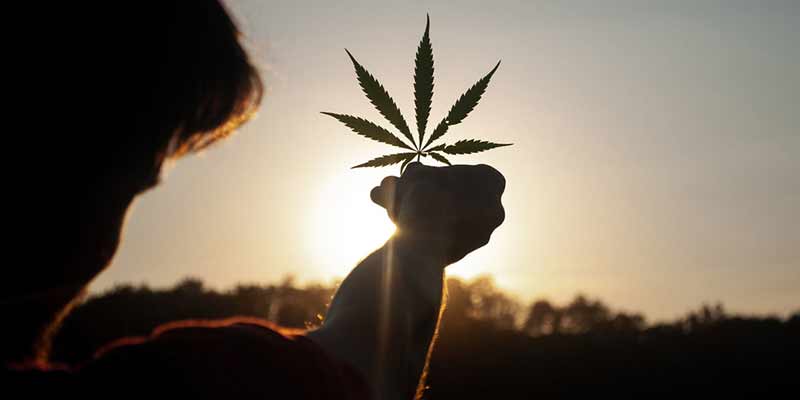- World
- Dec 06
UN Commission on Narcotic Drugs reclassifies cannabis
• The UN drug agency’s member states have voted to remove cannabis from the most tightly controlled category of narcotic drugs, following the World Health Organisation’s recommendation to make research into its medical use easier.
• The annual Commission on Narcotic Drugs (CND), the UN Office on Drugs and Crime’s governing body, voted 27-25 with one abstention to remove cannabis and cannabis resin from Schedule IV of the 1961 Single Convention on Narcotic Drugs, a global text governing drug controls.
What is cannabis?
• Cannabis is a generic term used to denote the several psychoactive preparations of the plant Cannabis sativa. The major psychoactive constituent in cannabis is ∆-9 tetrahydrocannabinol (THC). Compounds which are structurally similar to THC are referred to as cannabinoids.
• In addition, a number of recently identified compounds that differ structurally from cannabinoids nevertheless share many of their pharmacological properties. The Mexican term ‘marijuana’ is frequently used in referring to cannabis leaves or other crude plant material in many countries. The unpollinated female plants are called hashish. Cannabis oil (hashish oil) is a concentrate of cannabinoids obtained by solvent extraction of the crude plant material or of the resin.
• Worldwide, there were an estimated 192 million users of cannabis in 2018, corresponding to 3.9 per cent of the global population aged 15–64.
• In India, nearly 3.1 crore people use cannabis products and about 25 lakh suffer from cannabis dependence.
Classification of narcotic drugs
• The Single Convention on Narcotic Drugs, 1961 is the principal international treaty regulating the control of opioids. It seeks to limit the production, manufacture, exportation, importation, distribution, trade, use and possession of narcotic drugs exclusively to medical and scientific purposes.
• The Single Convention distinguishes four types of classification from most restrictive to least restrictive: Schedule IV, Schedule I, Schedule II and Schedule III. Each schedule refers to a number of control measures to be applied according to the gravity of drug abuse and dependence produced by the listed substances.
What were the recommendations of WHO?
• In January 2019, WHO Director General Tedros Ghebreyesus made a series of recommendations to the United Nations to update the scope of control of cannabis and cannabis-related substances. These recommendations reflected the emerging therapeutic role of cannabis-based medicines whilst continuing to prevent diversion, misuse, and other public-health related harms that may arise from cannabis use.
• Among WHO’s many points, it clarified that cannabidiol (CBD) – a non-intoxicating compound – is not subject to international controls. CBD has taken on a prominent role in wellness therapies in recent years, and sparked a billion-dollar industry.
• These recommendations were the outcome of a multi-year review process conducted by the Expert Committee on Drug Dependence (ECDD), an independent scientific advisory body to the WHO. Based on scientific assessment, potential health risk and therapeutic benefit, the ECDD recommends the appropriate scheduling of psychoactive substances within the international drug conventions.
• While the proposals were originally set to be voted on during the CND’s March 2019 session, many countries had requested more time to study the endorsements and define their positions.
What will happen after this voting?
• The CND’s 53 Member States voted to remove cannabis – where it had been placed for 59 years – from the strictest control schedules, that even discouraged its use for medical purposes.
• The CND decided to delete cannabis and cannabis resin from Schedule IV of the 1961 Convention. These substances remain in Schedule I of the 1961 Convention and thus remain subject to all levels of control of the 1961 Convention. According to reports, India voted in favour of the shift.
• The CND has opened the door to recognising the medicinal and therapeutic potential of the commonly-used but still largely illegal recreational drug.
• However, the final call on legalisation or use of narcotic substances remains up to governments.
• The decision could drive additional scientific research into the plant’s medicinal properties and act as a catalyst for countries to legalise the drug for medicinal use, and reconsider laws on its recreational use.
• Currently, more than 50 countries have adopted medicinal cannabis programmes while Canada, Uruguay and 15 US states have legalised its recreational use, with Mexico and Luxembourg close to becoming the third and fourth countries to do so.
What is the purpose of CND?
• The Commission on Narcotic Drugs (CND) reviews and analyses the global drug situation, considering the interrelated issues of prevention of drug abuse, rehabilitation of drug users and supply and trafficking in illicit drugs. It takes action through resolutions and decisions.
• The Commission was established by the Economic and Social Council (ECOSOC) as one of its functional commissions on February 16, 1946. The Commission assists the Council in supervising the application of the international drug control treaties. It also advises the Council on all matters pertaining to the control of narcotic drugs, psychotropic substances and their precursors.
• In 1991, the UN General Assembly requested the Commission to give policy guidance to and to monitor the activities of the United Nations International Drug Control Programme (UNDCP), which is administered by the United Nations Office on Drugs and Crime (UNODC).
• Under the international drug control conventions, the CND is mandated to decide on the scope of control of substances by placing them in the schedules of the conventions. Each convention includes a number of schedules. The Commission takes its decisions usually once a year based on recommendations by the WHO, the International Narcotics Control Board (INCB) and States parties to the conventions.
Manorama Yearbook app is now available on Google Play Store and iOS App Store

